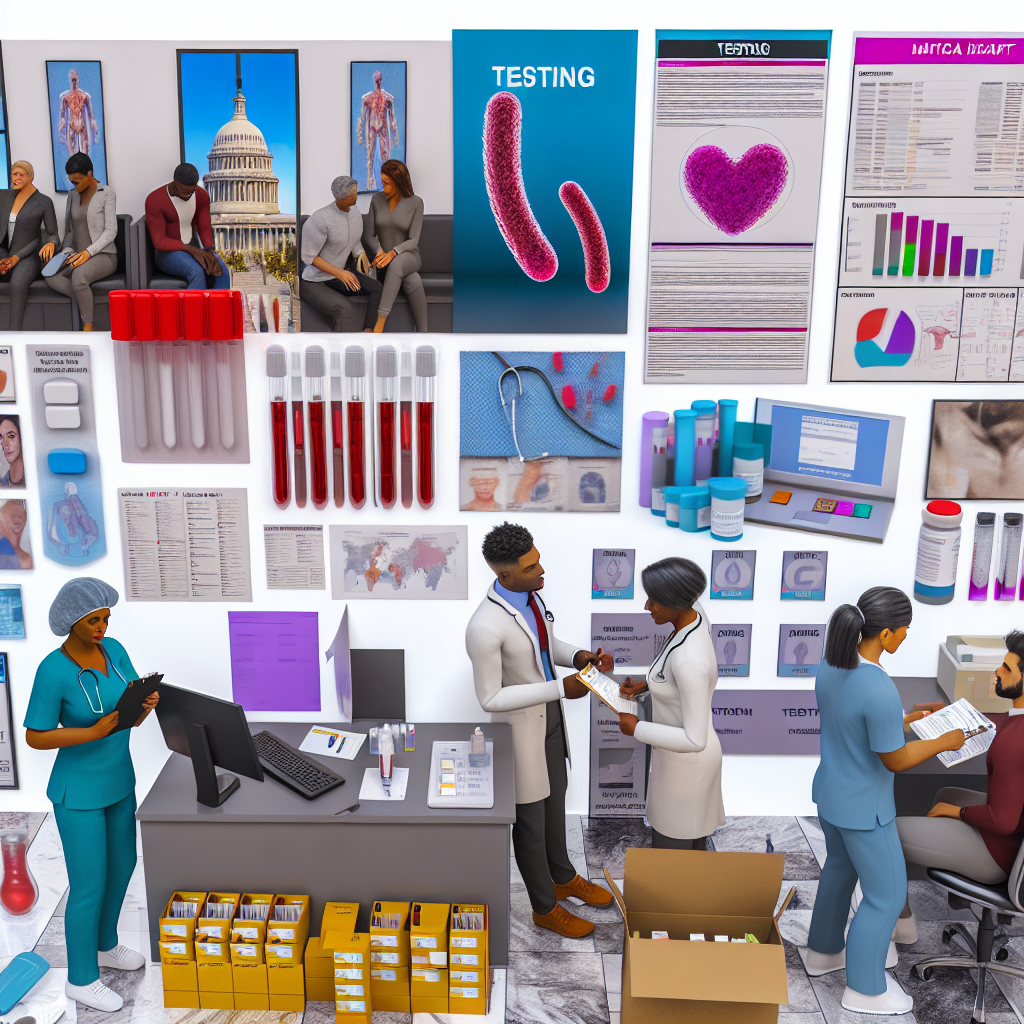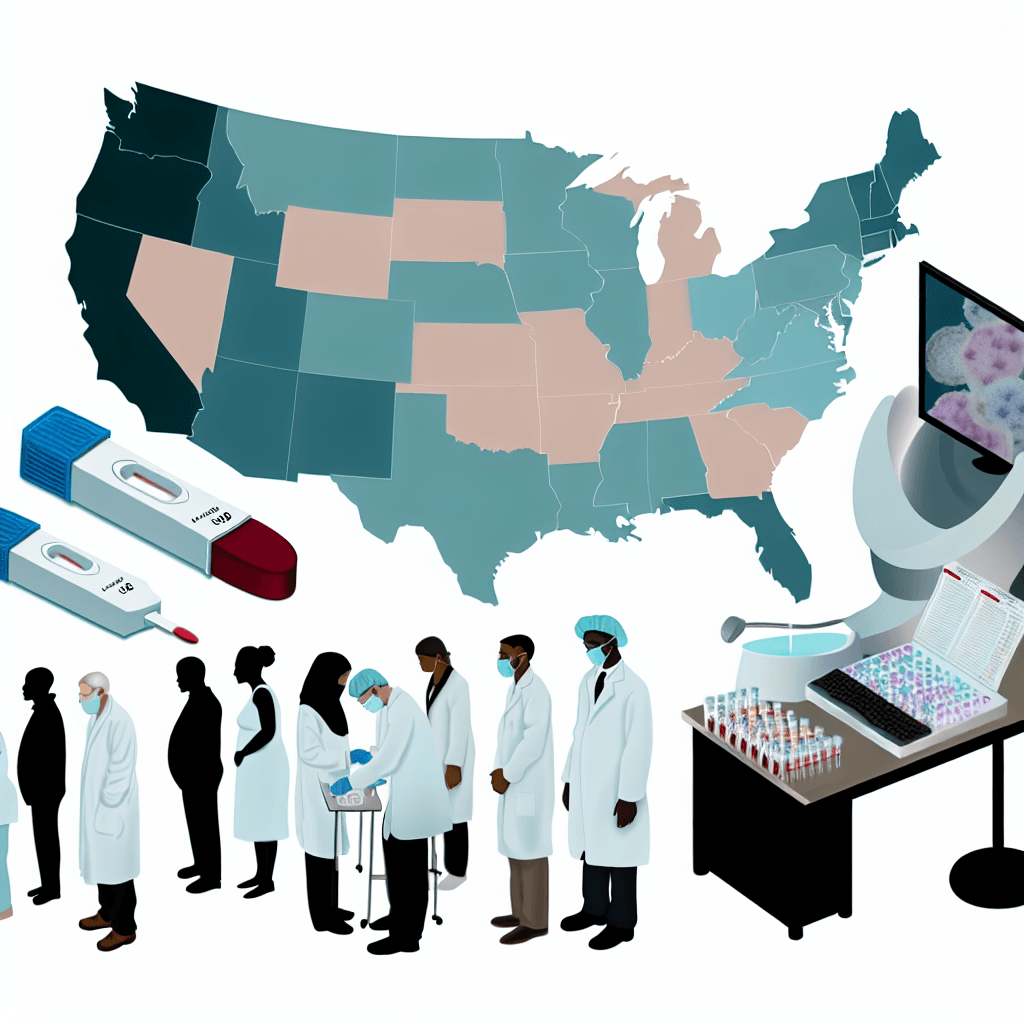Explore the U.S. sexual health testing market trends, growth drivers, and key industry insights.
United States Sexual Health Testing Market

Table of Contents
- United States Sexual Health Testing Market
- Overview of the U.S. Sexual Health Testing Market
- Current Market Size and Projections
- Key Drivers of the Market
- Challenges Facing the Market
- Market Segmentation
- Technological Innovations in Sexual Health Testing
- Case Study: Impact of Home Testing Kits
- Regulatory Landscape
- Future Trends and Market Outlook
- Conclusion
United States Sexual Health Testing Market

The sexual health testing market in the United States is a critical component of public health initiatives, aiming to manage and prevent sexually transmitted infections (STIs) and diseases (STDs). This article explores the current landscape, key drivers, challenges, and future trends in the U.S. sexual health testing market, providing a comprehensive overview for healthcare professionals, policymakers, and the general public.
Overview of the U.S. Sexual Health Testing Market
The U.S. sexual health testing market encompasses various diagnostic tests used to detect STIs such as chlamydia, gonorrhea, syphilis, herpes, HIV, and human papillomavirus (HPV). These tests are conducted through different methods, including laboratory-based testing, point-of-care testing, and home-based testing kits.
Current Market Size and Projections
According to recent studies, the U.S. sexual health testing market was valued at several billion dollars, with expectations for continued growth. Factors contributing to this growth include increasing awareness of STIs, government and non-governmental funding for sexual health programs, and advancements in testing technologies.
Key Drivers of the Market
- Increasing Prevalence of STIs: There is a rising incidence of STIs in the United States, driving the demand for effective and early detection methods.
- Technological Advancements: Innovations in diagnostic technologies, including rapid testing kits and mobile health solutions, are making sexual health testing more accessible and efficient.
- Government Initiatives: Increased funding and initiatives by public health organizations to promote sexual health education and testing are significant market drivers.
- Social Changes: Greater societal acceptance and reduced stigma associated with STI testing are encouraging more individuals to seek testing.
Challenges Facing the Market
- Lack of Awareness and Education: Despite improvements, there remains a significant portion of the population that is unaware of the importance of regular STI testing.
- Stigma and Privacy Concerns: Stigma around STIs continues to be a barrier for many individuals, discouraging them from getting tested.
- Access to Testing Facilities: In some rural or underserved areas, access to healthcare facilities offering STI testing is limited.
Market Segmentation
The U.S. sexual health testing market can be segmented based on disease type, testing location, and technology used:
- Disease Type: Market segments include HIV, herpes, chlamydia, gonorrhea, HPV, and syphilis.
- Testing Location: Testing is conducted at public health labs, hospitals, private labs, and through home testing kits.
- Technology: Technologies include PCR (polymerase chain reaction), immunoassay, and rapid diagnostic tests.
Technological Innovations in Sexual Health Testing
Recent technological advancements have significantly impacted the sexual health testing market. Innovations such as rapid tests provide results in less than 30 minutes, which greatly aids in the immediate diagnosis and treatment of STIs. Additionally, home testing kits have gained popularity, offering privacy and convenience to users and helping to reach a broader audience.
Case Study: Impact of Home Testing Kits
One notable example of innovation in this market is the introduction of home testing kits for diseases like HIV and chlamydia. These kits have not only expanded access to important health tests but have also played a crucial role in early detection and management of these conditions. Studies have shown that home testing kits have led to an increase in testing among populations that typically underutilize traditional healthcare services due to stigma or accessibility issues.
Regulatory Landscape
The U.S. Food and Drug Administration (FDA) plays a crucial role in regulating the sexual health testing market. All medical testing kits and devices must receive FDA approval to ensure they meet safety and efficacy standards. The regulatory framework also includes guidelines on the advertisement and sale of these products to protect consumers from misleading claims.
Future Trends and Market Outlook
Looking ahead, the U.S. sexual health testing market is expected to continue growing, driven by ongoing technological advancements and increased public health initiatives. Future trends may include:
- Integration of AI and Machine Learning: These technologies could improve diagnostic accuracy and personalize patient care.
- Expansion of Telemedicine: Telehealth services are likely to become more integrated with sexual health services, providing counseling and prescription services remotely.
- Increased Focus on Preventative Care: There will likely be a greater emphasis on vaccines and other preventative measures to complement testing.
Conclusion
The U.S. sexual health testing market is a dynamic sector with significant impacts on public health. Through the integration of new technologies, expanded access to testing, and ongoing public health efforts, the market is well-positioned to address the challenges posed by STIs. Continued innovation and education are essential to ensure that sexual health testing remains a key component of healthcare strategies across the country.
In conclusion, the U.S. sexual health testing market is crucial for early detection and management of STIs, benefiting individuals and communities alike. With ongoing advancements and initiatives, the future of this market looks promising, aiming for broader accessibility and improved health outcomes.








